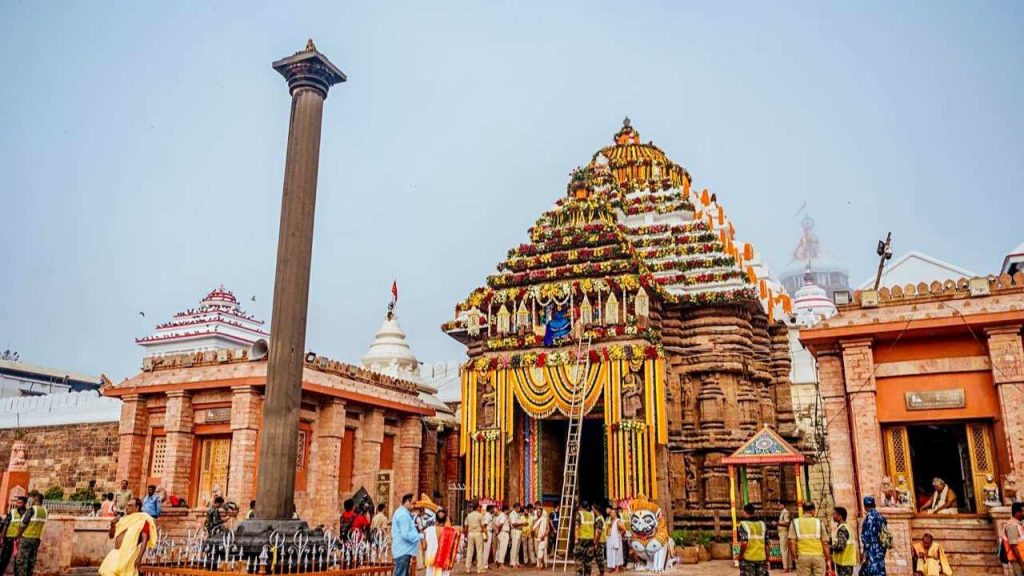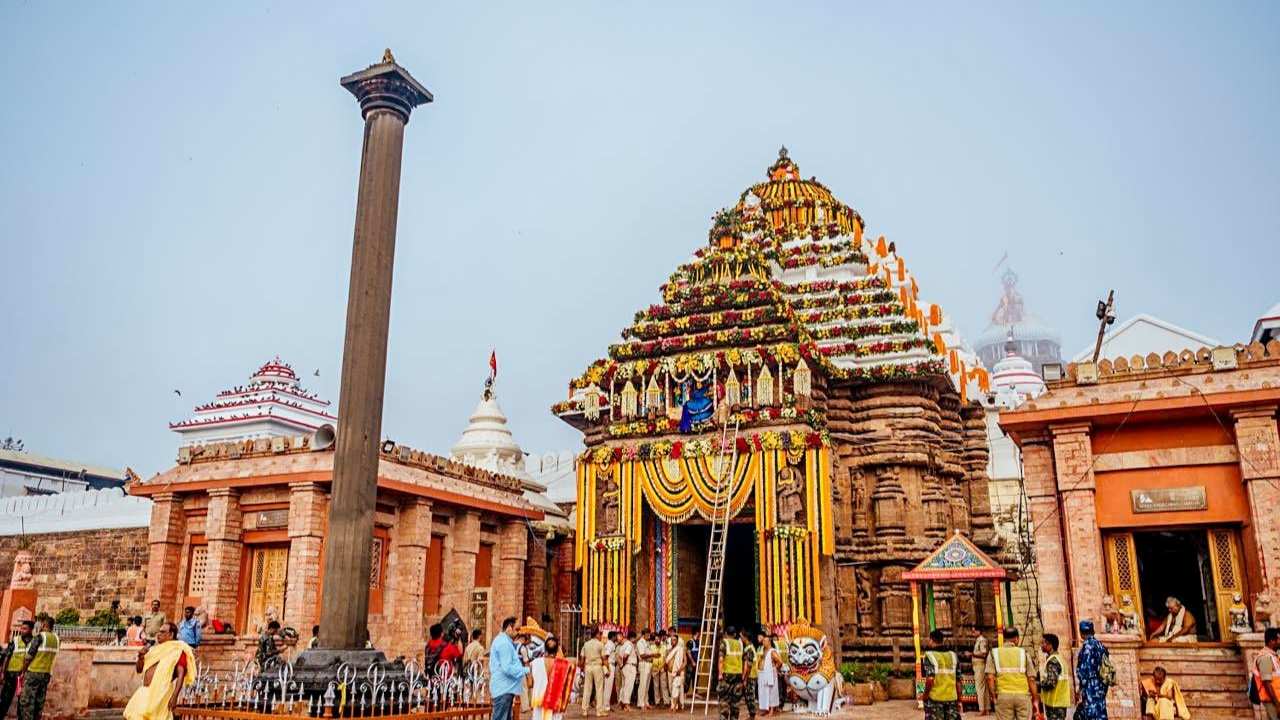In a world where technology often challenges the boundaries of tradition, a recent incident has stirred up quite the controversy. The Archaeological Survey of India (ASI) found itself at the center of a public storm after posting interior photos of the sacred Puri Jagannath Temple in Odisha, India, on social media. This temple, one of the most revered and ancient places of worship in the country, became the backdrop for a clash between modernity and tradition.
The photos showcased key areas of the temple, which is not only a place of religious importance but also a UNESCO World Heritage site. These photos were shared with the public through ASI’s official social media platforms. Unfortunately, the move led to a massive backlash from devotees, intellectuals, and even government officials. The uproar centered around concerns regarding the violation of temple protocols and the sanctity of the temple’s sacred spaces.

This article will unpack the controversy, why it matters, the implications it holds for heritage conservation and religious spaces, and what lessons can be learned from this incident. We’ll also explore how to balance preservation with respect for sacred traditions and why we should be cautious when documenting cultural and religious landmarks.
ASI Faces Backlash Over Posting Interior Photos of Puri
| Topic | Details |
|---|---|
| Incident | ASI posted photos of the interior of Puri Jagannath Temple on social media. |
| Date of Incident | July 28, 2025 |
| Photos Taken | Areas such as the Ratna Bhandar, Bhogmandap, Satapahacha, and Ghantidwara |
| Public Reaction | Devotees, heritage experts, and intellectuals criticized the post for violating temple protocols. |
| ASI’s Response | ASI deleted the post shortly after the backlash, but the photos had already gone viral. |
| Controversy Focus | Concerns about the violation of temple rules regarding photography and preservation of sacred space. |
| Key Issue | Balancing heritage conservation with respecting religious traditions. |
| Official Source | Sambad English |
| Location | Puri, Odisha, India |
The controversy surrounding ASI’s decision to post interior photos of the Puri Jagannath Temple underscores the delicate balance between heritage conservation and respecting the cultural and religious practices of sacred spaces. While technology and social media can be powerful tools for raising awareness about important sites, they must be used responsibly, with sensitivity to the traditions and beliefs of the communities they affect.
In a world where cultural heritage is increasingly vulnerable, it is crucial to find ways to protect these spaces while also ensuring that they are accessible to future generations. This incident serves as a valuable lesson in the complexities of preserving and respecting sacred landmarks and highlights the importance of collaboration between heritage experts, religious authorities, and the wider public.
By being mindful of these principles, we can ensure that the legacy of places like the Puri Jagannath Temple is respected and preserved for years to come.
The ASI and the Sacred Puri Jagannath Temple
The Puri Jagannath Temple is an important religious and cultural landmark in India. Located in the coastal town of Puri in the state of Odisha, this 12th-century temple is dedicated to Lord Jagannath, an incarnation of Lord Vishnu. The temple is famous for its annual Rath Yatra (chariot festival), which draws millions of devotees from around the world.
Because of its religious significance and historical value, the temple is considered a heritage site by UNESCO. The temple’s rituals and sacred spaces are an essential part of its cultural identity, and they hold deep meaning for Hindus, especially for those who visit it every year. Understanding this context helps to explain why the controversy over ASI’s post ignited such a strong reaction.
ASI, which is responsible for preserving and maintaining India’s heritage, has always been careful about how it shares information about religious sites. However, this incident has raised questions about whether technology and social media platforms should be used to document sacred places. The decision to post interior photos of the temple is not just a matter of aesthetics but of respect for the cultural, religious, and spiritual significance of the space.

Why the Backlash?
The core of the backlash lies in the violation of temple protocols. For years, Puri Jagannath Temple has maintained strict rules about photography within its premises. Devotees are not allowed to bring cameras, mobile phones, or other recording devices inside the temple. This rule is enforced to maintain the sanctity of the space, ensuring that religious practices are not disrupted and the privacy of the temple is respected.
When ASI shared these interior photos, it upset many who felt that this was a blatant disregard for the long-standing tradition of preserving the temple’s sacredness. Moreover, the photos, which depicted key areas like the Ratna Bhandar (the treasure vault), were meant to be seen by only a select few—primarily the temple’s priests and heritage experts. The idea of sharing them publicly, without considering the religious and cultural implications, rubbed many the wrong way.
As a result, many followers of the temple and cultural preservationists took to social media and public forums to voice their discontent. Some went as far as accusing ASI of undermining the temple’s religious dignity by publicizing areas that are meant to be off-limits. Furthermore, the public release of these photos also raised questions about security concerns, as the Ratna Bhandar, known to contain precious items, is typically kept hidden from the public eye for protection reasons.
The Role of ASI and Heritage Preservation
The Archaeological Survey of India has a critical role in safeguarding India’s cultural heritage. Founded in 1861, ASI is responsible for the excavation, conservation, and restoration of monuments, including religious and historical sites across the country. Its mission is to protect and preserve India’s rich history for future generations.
However, ASI’s role has often been a balancing act. On one hand, ASI must ensure that historical monuments are preserved, which can sometimes involve sharing photos and information with the public to raise awareness. On the other hand, it must respect the religious and cultural practices associated with these sites.
ASI’s responsibility to preserve heritage sites can sometimes conflict with the customs that govern those sites. In the case of Puri Jagannath Temple, the cultural norms surrounding the temple are as important as the architectural integrity of the building. The ASI must ensure that any actions it takes, whether in terms of preservation, research, or publicity, are done in consultation with temple authorities and in full respect for the cultural practices that have been followed for centuries.
Practical Advice for Heritage Preservation
To avoid similar controversies in the future, it is important for heritage conservationists, including organizations like ASI, to follow a few key principles when working with sacred sites:
- Consultation with Local Authorities: Before sharing images or information about a sacred site, it is essential to consult with religious and local authorities. For example, in the case of the Puri Jagannath Temple, discussions with the temple administration should have occurred before posting any photos.
- Respecting Religious Protocols: Understanding the traditions and rules that govern religious spaces is paramount. No matter how important the site is for heritage conservation, it is equally vital to honor its spiritual significance.
- Transparency with the Public: If it is necessary to share photos or data about sacred sites, the public should be informed about the intent and purpose of the sharing. This can help alleviate concerns about potential misuse or misunderstanding.
- Limit Public Access to Sensitive Areas: Areas that hold cultural, religious, or financial significance should not be widely photographed or made public unless absolutely necessary. As seen with the Ratna Bhandar, certain areas should be kept private to preserve both their sanctity and security.
- Education and Awareness: Engaging with local communities and educating them about the importance of preserving their heritage is essential. This can help build mutual respect between heritage authorities and the communities they serve.
Odisha Aims to Secure Exclusive Rights Over Jagannath Temple Rituals
Adani Foundation’s ‘Prasad Seva’ Feeds Millions During Jagannath Rath Yatra
Puri Srimandir Closes Public Darshan for Banakalagi Ritual: What You Need to Know
FAQs
Why did ASI post the interior photos of the Puri Jagannath Temple?
The photos were part of ASI’s efforts to document and preserve heritage sites. ASI often shares information and images of historic monuments to raise awareness about their importance. However, in this case, the decision to post interior photos was controversial due to the violation of temple rules and the sacred nature of the temple.
What was the main concern raised by the public?
The main concern was that the photos violated the strict no-photography rule within the temple. Many felt that posting these images disrespected the temple’s sacredness and could compromise its security.
Has ASI addressed the backlash?
Yes, after the backlash, ASI deleted the photos. However, the damage had already been done, as screenshots of the images had gone viral across social media platforms.
What is the Puri Jagannath Temple’s significance?
The Puri Jagannath Temple is one of the holiest sites for Hindus and is considered a UNESCO World Heritage site. It is home to Lord Jagannath, an incarnation of Lord Vishnu, and hosts the world-famous Rath Yatra.
Can photography be allowed inside sacred temples like Jagannath Temple?
No, most sacred temples, including the Jagannath Temple, have a strict policy against photography to maintain the sanctity of the space and protect the privacy of religious rituals.





